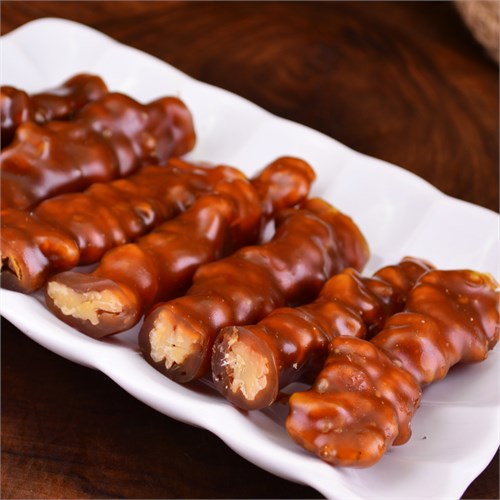Dolce Dessert
The desserts at Dolce aren’t just dolce (sweet), they’re also incredibly pretty. Exquisite crème brûlées, lemon pralines and passionfruit pavlovas are presented with such Instagrammable flair that it’s almost a shame to eat them. This dessert place is also known for its macarons, which are a light, fluffy, not-too-sweet affair running the full gamut of flavours from orange butternut to pistachio and coffee.Merry Me
The reason you’re here is simple: You want your Kopitiam (coffee shop) white coffee hot, and your salted egg cookies and your tau fu fah (soft beancurd in gula melaka, Malaccan palm sugar) iced, sweet and in a cone. Between salted egg Oreo ice cream and tau fu fah flavours topped with swirls of sticky gula melaka, this is the best place to indulge in your post-meal cravings without hitting the street stalls.Norm
If you want waffles, coffee, cocktails and a bit of joy, this is the place to have it all. Warm, crispy waffles are the norm here – from the Regular Joe waffle topped with rich, melting butter to the Monkey Business banana split drizzled with chocolate sauce. We recommend the Go Go Coco, with coconut ice cream, homemade kaya (coconut jam) syrup and toasted palm seeds – because joy should be the norm, really.Fourspoons
Bring your friends, because Fourspoons shouldn’t be a one-person secret. This delicious hideout in Icon City, the new strip mall in Bukit Mertajam, delivers apple crumble pancakes, sweet potato waffles and black sesame soft-serve ice cream to your table or your door (even if it’s in Kuala Lumpur). Paralysed by choice? Go for the classic chocolate banana waffle – you may even forgo the optional four spoons and have one all to yourself.The Craftisan
Minimalists will love The Craftisan’s decor, coffee enthusiasts will love its cold brew, and sweet-toothers will love its dessert. The delicately crafted delícias de serradura (sawdust pudding) is served with soft gelato, while the decadent jackfruit panna cotta is topped with coconut flakes and gula melaka. For novelty, you can also try the unique Stacko Valentino: a crispy donut layered with whipped cream, fresh fruit and chocolate glaze.Crepe Cottage
Ever thought you could combine fresh honeydew, green tea and crepes? Well, it’s time to expand your gastronomic horizons at Crepe Cottage, where crepe-based sweets and savouries reign supreme. Between strawberry rolls, coconut parcels and mango crepe cups, you’ll be spoiled for choice at this simple, no-frills, cottage-style establishment.See more: What to do in Penang, Malaysia
Source: Internet


















































